Salomon turns 60
We will probably all be content to make our sixtieth although there will be the inevitable feeling that our glory days lie somewhere behind us. It seems that way for Salomon, once one of the powerhouses of ski equipment design.

“Your guardian angel”, Salomon advert circa 1965
It was 60 years ago that François Salomon and his son George rented a 50m² workshop in Annecy old town and started making saw blades and ski edges. Within five years George had introduced a perfected cable binding to the market and developed an automatic machine for making steel edges. Then in 1955 Salomon introduced one of the first releasable toe-pieces, the Skade and two years later perfected the cable binding heel in the form of le lift. In 1950s France, emerging from the harsh war years, there was something of an vogue for American sounding names. Jean Beyl had introduced his “Look Nevada” in 1950. The Nevada is arguable the grand-daddy of modern binding systems. The Nevada II toe design remained in production for 40 years.
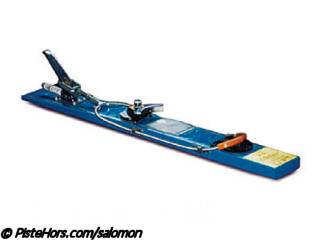
Allais toe piece with “le lift” cable heel
Salomon continued with cable based heel designs culminating with the (Emile) Allais safety binding in 1962. By this time the company had a worldwide distribution network and was starting its ascension to world leadership. The technology behind the Allais and Skade evolved into the S505, the world’s first step in heel piece, introduced at the end of the 1960s. The bindings didn’t have the same 10-16 level DIN settings of today but rather a soft, medium and hard setting. This could lead to pre-releases. The S505 was followed by the S444 and by 1972 Salomon was the world’s number 1 binding maker with more than a million units sold per annum.
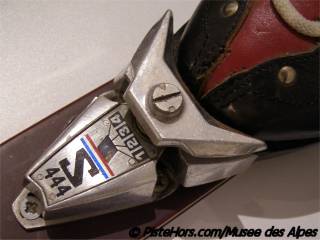
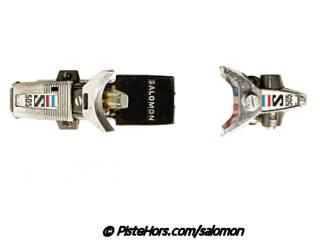
In 1976 Look’s single pivot patent expired and Salomon was able to adopt its advantages of long elasticity in the S727 binding. At the end of the 1970s Salomon started manufacturing ski boots and left Annecy town for larger quarters in Metz-Tessy. The SX90 was a rear entry boot and the company achieved real success with the SX60. However it is the SX91 Equippe which debut in 1984 that skiers remember. A two clip rear entry boot with variable forward flex control it has been described as the best ski boot ever made. They can still be seen on the ski slopes today.
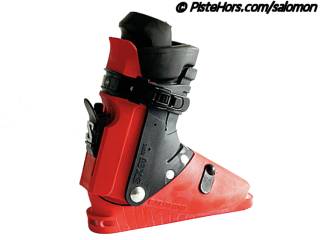
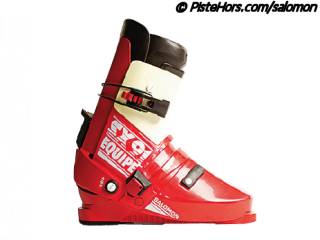
SX90 and SX91 - a dozen year’s development to reach perfection
In 1990 Salomon introduced the first monocoque ski, the S9000. They looked call although were no better than existing designs, the advantage was cheaper manufacturing costs. They scored further success in 1998 with the X-Scream all mountain ski and 1080 freestyle ski. Salomon also made progress in cross-country skiing with the now almost universal SNS binding system and managed to ride several new waves such as snowboarding and rollerblading. However in 1998 the business was sold to Adidas for 8 billion Francs (about € 1.6 billion in 2007 prices). By the early 2000s Salomon ski brands were out of favour and Adidas finally sold the group to Amer Sports (which also owns Suunto and Atomic) for € 485 million in 2005. Sales had declined and they took a considerable loss on this deal.

S9000 monocoque ski
At the time of the sale Salomon had 1600 employees including 60 in the Ain who made cycles for Mavic. Salomon was manufacturing 250,000 pairs of skis per year and had a turnover of € 653 million but made just € 28m.. Amer started restructuring with around 400 job losses, provoking strikes and protest marches from the employees. It remains to be seen whether Amer can rekindle the Salomon magic but next season may see a return to form in the shape of the 1080 Gun freestyle ski and X-Wing range of freeride skis.

S727 introduced in 1978
Posted by
davidof on Monday, 26 November, 2007 at 10:48 PM
The outside was still looking great, almost like new, despite the friction scratches all over ; not any element needed any change over the years and the ease of slip-on & operation (immediate release/reset of preset settings when needed) is unequalled
Posted by on Monday, 15 July, 2013 at 08:48 AM
Comments are now closed








